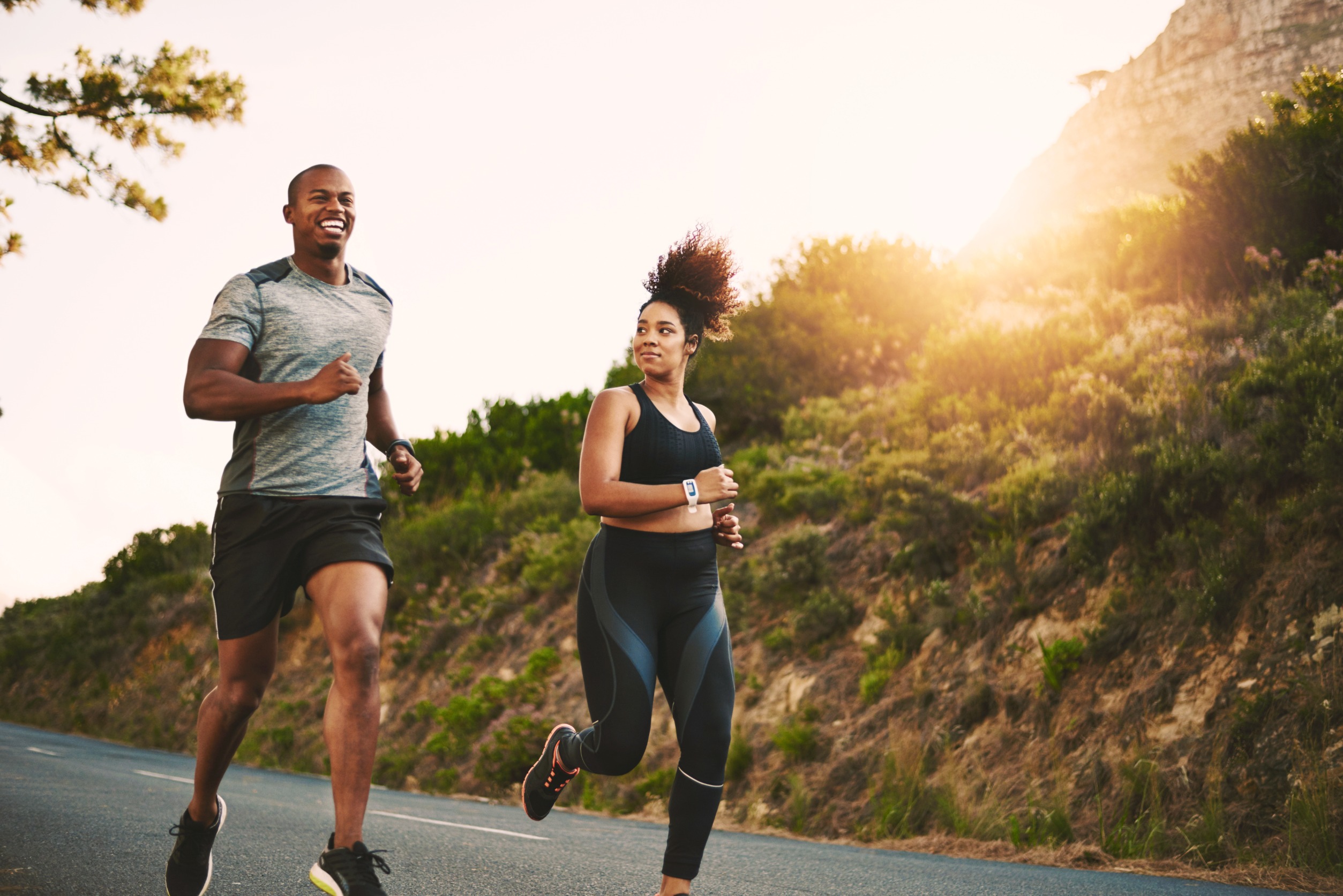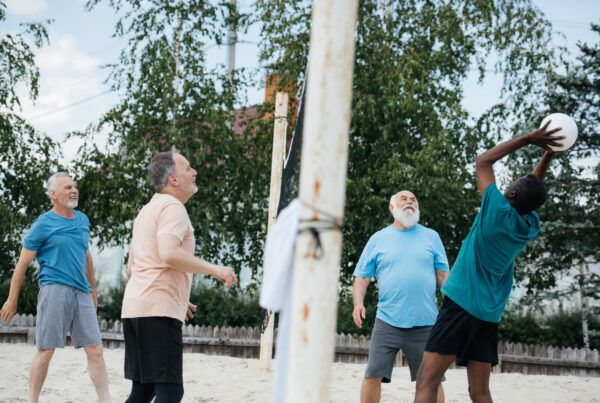”Question: I have diabetes and want to know what kind of exercise would be good for me?
Reading time: 6 Minutes
MWi Hack:
-
Learn about how exercise can help prevent and manage diabetes in addition to how to start an exercise routine and stay consistent.
MWi Summary:
-
-
- Exercise has several benefits including weight loss, better sleep, and blood pressure control.
- There are several ways to exercise that include housework, mowing the lawn, playing sports, and brisk walking.
- You can stay consistent with exercise with a few different strategies:
- Find something you like
- Pick a goal
- Exercise with a friend
- There are ways to reframe obstacles to exercise as well.
-
Physical activity is very important for people with diabetes! Good news – it’s not as hard as you might think to be more active.
Being More Active Is Better for You
If you have diabetes, being active makes your body more sensitive to insulin (the hormone that allows cells in your body to use blood sugar for energy), which helps manage your diabetes. Physical activity also helps control blood sugar levels and lowers your risk of heart disease and nerve damage.
Being physically active can be fun. When it’s possible, go outside with a friend, connect, and enjoy the weather.
Some additional benefits include:
- Maintaining a healthy weight
- Losing weight, if needed
- Feeling happier
- Sleeping better
- Improving your memory
- Controlling your blood pressure
- Lowering LDL (“bad”) cholesterol and raising HDL (“good”) cholesterol
How To Benefit From Physical Activity
The goal is to get at least 150 minutes per week of moderate-intensity physical activity. One way to do this is to try to fit in at least 20 to 25 minutes of activity every day. Also, on 2 or more days a week, include activities that work all major muscle groups (legs, hips, back, abdomen, chest, shoulders, and arms).
Examples of moderate-intensity physical activities include:
- Walking briskly
- Doing housework
- Mowing the lawn
- Dancing
- Swimming
- Bicycling
- Playing Sports
These activities work your large muscles, increase your heart rate, and make you breathe harder, which are important goals for fitness. Stretching helps to make you flexible and prevent soreness after being physically active.
Ways To Get Started
Finding an activity you enjoy and having a partner helps you stick with it.
- Find something you like. Exercising by doing something you enjoy is important because if you don’t like it, you won’t stick with it. Find an activity that you and your health care provider agree you can do regularly for the best results.
- Start small. If you’re not already physically active you should begin slowly and work your way up to the desired level. For example, you could park farther from the door, take the stairs, do yard work, or walk the dog. Start small and gradually add a little more time and intensity each week.
- Find a partner. It’s more fun when someone else is counting on you to show up. Having a partner may help you continue to be active.
- Pick a goal. An example of a goal could be to walk a mile every day for a month or to be active every weekday for 30 minutes. Be specific and realistic. Always discuss your activity goals with your health care provider.
- Schedule it in. The more regular activity you do, the quicker it will become a habit. Think of ways to link activity to daily life. For example, you could schedule walking with a co-worker after lunch. Try not to go more than 2 days in a row without being active.
Ways To Turn Excuses Into Solutions
For every excuse, there is a workable solution. Listed below are some of the most common excuses and suggested solutions.
| I’m not more active because… | Ways to make it work |
|---|---|
| …it’s just too hard. | If you think being more active means hours at the gym, it’s just not true! You can start by walking for 10 minutes after dinner, gradually building up to 30 minutes most days. |
| …the results take too long. | Some benefits start right away, even if they don’t seem obvious to you. Check your blood sugar before and after you take a walk. You’ll likely see a lower number after the walk. If you stick with it over time (weeks, months, years), you will see more obvious results. |
| …it’s just not fun. | It can be lots of fun if you find an activity you enjoy. Don’t force yourself to do something you don’t like. You won’t stick with it. Try doing a new activity a couple of times before deciding whether to continue with that activity. If one activity isn’t a good fit, don’t give up. Try something else. |
| …it costs too much. | The costs for gym memberships and fitness classes can add up. However, walking during lunch or after dinner, dancing to your favorite tunes at home, or working out to online videos are free and can be done at times that are more convenient for you. |
| …it’s hard to find the time. | Find ways to squeeze physical activity into your day-to-day life. For example, take the stairs instead of the elevator, play outside with your children, get up and move during TV commercials. Try to fit in at least 20 to 25 minutes of activity every day, which will help it become a habit. |
| …I’m just too old. | It’s never too late to start being more active! Low-impact activities like pool walking and swimming are examples. Talk to your health care provider about activities that you can do to get started. |
| …I’m too out of shape. | Start slowly, and work your way up to your desired level. Add simple activities to your daily life like walking to your mailbox, or when you’re running errands park a little farther from the door. Discuss other ideas with your health care provider. |
Special Considerations for People With Diabetes
Protect your feet by wearing cotton socks with well-fitting athletic shoes.
Before starting any physical activity, check with your health care provider to talk about the best physical activities for you. Be sure to discuss which activities you like, how to prepare, and what you should avoid.
- Drink plenty of fluids while being physically active to prevent dehydration (harmful loss of water in the body).
- Make sure to check your blood sugar before being physically active, especially if you take insulin.
- If it’s below 100 mg/dL, you may need to eat a small snack containing 15-30 grams of carbohydrates, such as 2 tablespoons of raisins or ½ cup of fruit juice or regular soda (not diet), or glucose tablets so your blood sugar doesn’t fall too low while being physically active. Low blood sugar (hypoglycemia) can be very serious.
- If it’s above 240 mg/dL, your blood sugar may be too high (hyperglycemia) to be active safely. Test your urine for ketones – substances made when your body breaks down fat for energy. The presence of ketones indicates that your body doesn’t have enough insulin to control your blood sugar. If you are physically active when you have high ketone levels, you risk ketoacidosis – a serious diabetes complication that needs immediate treatment.
- When you’re physically active, wear cotton socks and athletic shoes that fit well and are comfortable.
- After your activity, check to see how it has affected your blood glucose level.
- After being physically active, check your feet for sores, blisters, irritation, cuts, or other injuries. Call your health care provider if an injury doesn’t begin to heal after 2 days.






